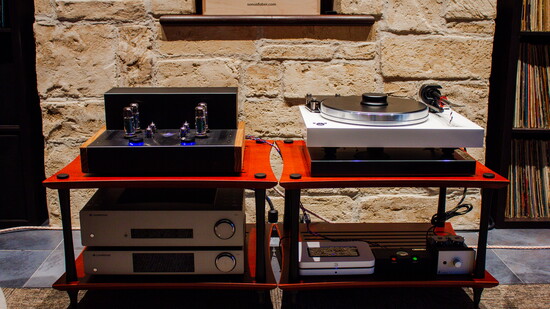Media rooms—once the exclusive domain of oversized projectors, surround sound, and tiered seating—are evolving. Today, homeowners are rethinking how and where they enjoy movies, music, and entertainment in their homes. Whether it’s streaming a show, hosting a movie night, or filling the house with music, the way people design and use these spaces reflects their personality, lifestyle, and stage of life.
From Dedicated to Multipurpose
The traditional idea of a media room as a dedicated home theater is becoming the exception rather than the rule. Many homeowners now prioritize flexibility. “Gone are the days of always designing dark, windowless rooms for projectors,” Nicole Roberts Winmill of NR Interiors says. “Now, with the high resolution and extra large TVs, a media room can be full of natural light and also function as a bar, game room, or cozy family room.”
For families with children, media spaces often center around convenience and adaptability. A dining room might transform into a theater for sports fans or movie marathons. Dan Sawyers of Audio Geeks says one of his friends did this by installing a projector and screen where a formal dining table would traditionally sit. In other households, media hubs migrate to less conventional areas. “Some people never use the TV in their living room,” Sawyers says, “but they’ll have a high-quality setup in the bedroom instead.”
Audio That Goes Beyond
For many, the shift isn’t just about where media is consumed, but how. Whole-home audio systems have become increasingly popular, allowing homeowners to stream music seamlessly throughout their living spaces. “People want music everywhere,” Sawyers observes. “With modern smart devices, you can integrate music streaming apps directly into your home system.”
This trend aligns with the rise of compact yet powerful soundbars and wireless speakers. As TVs grow thinner, audio quality often suffers. “Soundbars have become the go-to solution for better TV sound without clutter,” Sawyers explains. “It’s about having something that enhances the experience without taking over the room.”
Personalized by Personality
The design of a media space is deeply personal. Empty nesters may gravitate toward cozy, private setups in their bedrooms, while young families prioritize communal spaces that accommodate everyone. Tech-savvy homeowners might embrace the latest innovations in smart home integration, combining video and audio for a seamless experience.
“Media rooms are now more open to other main areas of the home,” Winmill points out. “Making them a beautiful, cohesive extension of the rest of the house is ideal for most people.” Sawyers agrees, emphasizing the importance of tailoring systems to fit the user. “The question is always, ‘What do you want it to do? Who’s going to use it?’” he says. “From there, you design it around their needs.”
Home Entertainment of the Future
With advancements in streaming, smart technology, and compact audio systems, the traditional media room has expanded its boundaries. It’s no longer confined to a single space but infused throughout the home—and even outdoors—reflecting how we live today. Whether you’re watching movies, listening to music, or both, the possibilities are endless and more personalized than ever.
audiogeeks.com | 800-464-1540 | 4714 Shavano Oak, Bldg 2, San Antonio
nrinteriors.com | 210-499-0008 | 23119 I-10 W, Bldg 2, San Antonio
